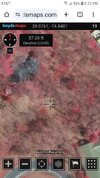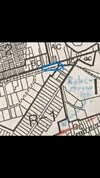Hello all, I live out in California but have been researching my family tree and looking up things in this area for many years, since my ancestors settled in this area in colonial times, and I am wondering if anybody has came across Thomas Rakestraw's gravestone (same Thomas Rakestraw mentioned in Jerseyman's awesome local history post) or if they've seen any old cemetery near an old saw pit or may know where he lived based on some of the descriptions I have, as his later property sales somehow aren't recorded, but I presume he was neighbor or was near Breezy Ridge, since he or his wife (Elizabeth, nee Zane) sold some land to Charles Read 1758 on the North side of the South Ancocus, but he also had his will saying his property line was next to Joseph Moore's place:
"1773 Dec 6. Rakestraw, Thomas, of Evesham, Burlington Co., cordwainer; will of. My body to be buried on my own land near an old sawpit, by the line of Joseph Moore's land, at which place I reserve a piece of 30 feet in length and 25 in breadth, which I order not to be sold or conveyed away, as long as the water runs in Delaware River, but to be kept for a burying place for my family forever. Wife, Elizabeth, to be well provided for on the place, and she is to keep son, Job, 2 years after my decease, but, if she marry, my friend and trustee, Isaac Evens, is to take him. I would have her to keep my youngest son, Paul Chalkley, till he is 8 years old. Son, Thomas, plantation where I live; and to his brother, Abram [...]" Here's the property entry from NJ State Archives about the land he sold to Charles Read, which makes me think he must have been his neighbor, if still doing things for him and the map Jerseyman provided in his post, fits the description:
Rakestraw, Thomas (ux) (Grantor) | TO: Charles Read
FROM: Thomas Rakestraw (ux)
CONVEYANCE. North side south branch Ancocus Creek, Burlington County.
OTHERS NAMED:
LOCATIONS: West Jersey; Burlington; Ancocus Creek | 16 Feb 1758 |
The land sale above may have actually been from land he had procured by marrying first wife, (Mary, nee Mason) since that sale coincides with around the time she passed away in 1757.
Any help on finding where he and his 30 x 25 ft. family burial plot may be, or to narrow down, would be greatly appreciated!
Thanks in advance,
~Lisa "ElleJay"









